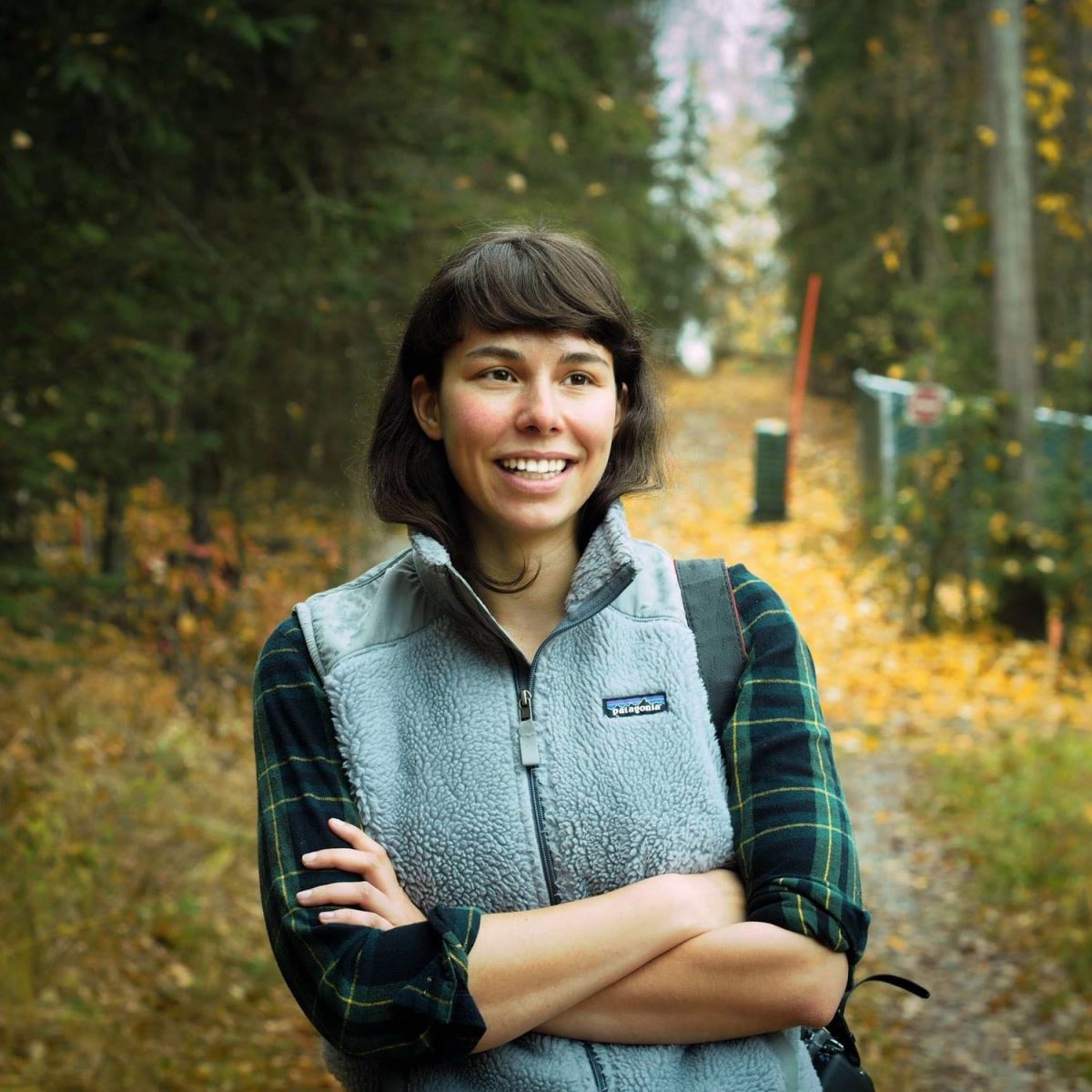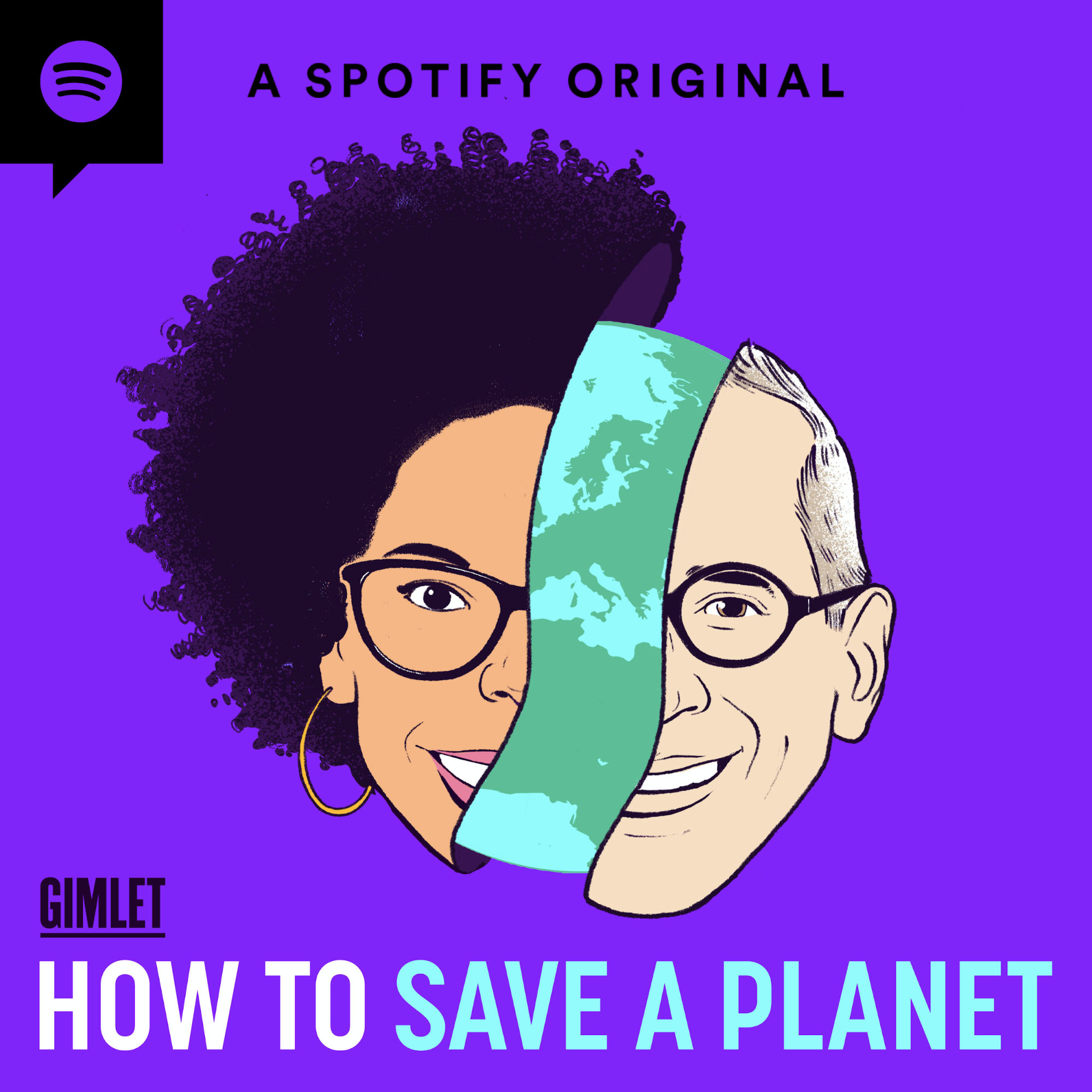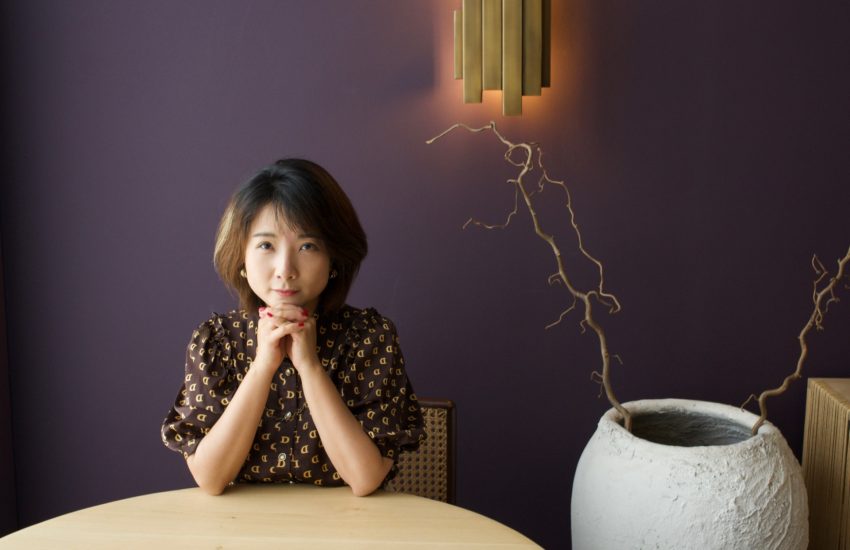Behind the scenes at ‘How to Save a Planet,’ a climate solutions podcast
Climate change can be overwhelming to think about. But Gimlet Media’s new podcast, How to Save a Planet, is informing listeners about tangible climate solutions. The show is hosted by Dr. Ayana Elizabeth Johnson, marine biologist and climate policy expert, and Alex Blumberg, co-founder and CEO of Gimlet Media.
The show’s first season began in August 2020 and features a range of guests from community organizers to policy writers to climate experts. With a trumpet fanfare theme song, their episodes are upbeat, sprinkled with occasional puns, and the hosts ask, “How screwed are we?” to every guest. Their conversations tackle intersecting national social issues, like “Black Lives Matter and the Climate,” as well as renewable energy and natural disasters.
Rachel Waldholz, a producer for the show who is based in Berlin, worked on episodes that told the origins of the European Green Deal, examined “How 2020 Became a Climate Election,” and covered local efforts to retrofit existing buildings to become more energy-efficient, among other episodes.
“We’re really focused on the fact that there are solutions and laying that out to expand the conversation,” Waldholz said.
Storybench spoke with Waldholz about reporting and producing for the show.
This interview has been edited and condensed.
What is your role in the show?
I’m a producer on How to Save a Planet, so that’s sort of a jack-of-all-trades role where I do a little bit of everything. So I’ll pitch stories and do some reporting, and depending on the episode you might actually hear my voice in the episode, or I might just book an interview and then the host will do the interview, and I’ll help cut it down and shape it.
When you’re looking into the history of these topics, how do you find the various reference audio clips listeners hear throughout the show?

Rachel Waldholz. Photo by Zachariah Hughes.
I think it really depends. One episode we did a ton of archive audio with was the story of ‘The Green Wave’ in Europe. In that case we’re telling the history of the last two or three years, and I lived through a bunch of it and reported on it as a reporter in Germany, so I knew that audio existed. We went and found it, or in a couple cases, audio that I had actually recorded at the time. In that case, when you have reported on the history, then you know like, ‘OK, what are the great moments? What are the big speeches? What are the moments that really send this story down a different direction?’
But for the episode we did about the Republican party, where we’re going back to the early 1970s, it was much more like doing research and finding references to speeches in newspaper articles and then going and trying to track down that audio. Our producer, Felix Poon, did a great job of tracking down all of this audio for that particular episode.
And some of it was specific moments, like a campaign stop where George Bush Sr. pledged to act on climate change, and you just find a newspaper reference to that and go hunting for it in American Archive of Public Broadcasting or just on YouTube. If we’re looking for a Richard Nixon speech, the Richard Nixon Foundation has a ton of audio and video recording. But in that case, it’s like an archaeological dig, like ‘What can you find that illustrates your point?’ and sometimes the audio you find really shapes the story.
When we were talking about Ronald Reagan and how he really shifted the direction of the Republican Party on environmental legislation, I was just looking for Reagan campaign ads, and we came across this great campaign ad where he used the slogan ‘Make America Great Again,’ which I had sort of forgotten that that was a Reagan slogan, and it was a great way to connect that moment with our current moment. But it’s a lot of YouTube searching, and a lot of finding a print reference to something and then going to see if you can find the audio.
How do you go about finding these on-the-ground voices of people who are really active in the climate movement?
I think that’s always the challenge: finding someone who was there in the middle of it and has a great story to tell and also is great at telling stories; finding, what we call in radio, a good talker. I think that’s really key for assembling episodes.
One of our hosts, Dr. Ayana Elizabeth Johnson, is really involved in climate policy and the climate movement, and so she knows a lot of the key players. In some cases, when we’re talking about a key moment, she’ll often know a lot of people that were involved, that we can reach out to. So Ayana had worked with and knew Rihana Gunn-Wright, who’s one of the architects of the Green New Deal, so we were able to get Rihana on the phone to talk about: ‘What was it like when you were first asked to put this plan together? How did that feel? What did you think about it?’
In other cases, you find an interesting topic and then you just go looking for someone. So it’s a lot of like, ‘Who is the most interesting person?’ and then calling people up and having them recommend people, and then calling them up and having them recommend people, until you find someone who really can tell you the story of what it was like on the ground in that moment.
And a specific episode that you worked on — the electric cars episode — how did you go about researching that?
That was an interesting episode because we built it around a question from listeners. It was this couple who were having an argument about what’s better for the climate: a used gas-powered car that’s not new, someone else has driven, or is it better to get a new electric vehicle?
I was looking for someone who could talk about the whole life cycle of the vehicle because you’re not just talking about the emissions from driving it, you’re also talking about the emissions from building the vehicle from scratch. The European Union had just requested this giant study looking at all of the life-cycle analyses that are already out there to decide: Should we be promoting policies in the European Union that promote the use of electric vehicles? So we ended up featuring [the lead author] as our main source to answer those listeners’ questions.
How is the show informing on how financially viable transitions to renewable energy can be?
I think this is something that — even as someone who is covering climate change for a little while now — is constantly surprising: how quickly renewable energy has become cheaper, more cost effective than coal, and even in some cases, natural gas. That change in the cost of the technology has created a sea change in what is possible both technically and politically in terms of deployment of renewables. I think in some ways, it’s the biggest story in climate solutions … that renewable energy can be deployed at a speed and scale that just didn’t even seem possible a decade ago.
For folks who are not following climate change closely, I think it’s something that hasn’t quite trickled down to everyone’s consciousness. So it’s something that we really emphasize, which is that with the technology that we have today, we can get really far down the road. We can get maybe not a hundred percent of what we need to do to mitigate, but we can get really far with the technology we have right now. And it’s really a matter of political will and policy; it’s not a matter of needing new moonshot technologies, you know?
It’s true that we may need new breakthroughs in technology to sort of get the last mile, but we can get really far with what we have, and I think for us that’s a really key theme because it’s something that I think lots of people still aren’t aware of. I think for a lot of people it still feels like this challenge is still impossible. And it’s like ‘No, actually, we have the tools we need.’
Why is the show addressing that political divide around climate, and how is it bridging that gap?
We’re a U.S.-based show, and I think in the U.S. climate change is such a politicized issue, so you really can’t talk about climate change without addressing head-on that it’s become so polarized — that you have two main political parties in the U.S. and one has been, for the last several decades, pretty opposed to climate action. It’s really important to recognize that even though there is that political divide among the parties, there’s actually a lot of agreement in the public. The majority of people agree that climate change is happening; they agree that we should do something about it. And so, even though you have this political divide among elective leaders, that doesn’t always exist on the ground.
For me, living in Germany for the last couple years, it was really interesting to be in a place where that political divide doesn’t exist in the same way — where you have conservative political parties in many cases driving climate policy. The lesson in the European Union at least is that what it takes to get consistent climate policy is that you really need to have this broad coalition that stretches across both liberal and conservative parties, so that when power switches hands, you don’t have people constantly rolling back progress on climate change.
Even if people disagree on which kind of climate policy, the agreement that it’s a problem and that you need to take action has really been key for the kind of progress on climate change that you see in the European Union. And in some cases, you see conservative politicians are spearheading climate action, in the case of European Green Deal, for instance.
One role that the show can play is to have that conversation across the political divide that sometimes is hard to have in our ordinary lives, so that people can talk this out and that we can be a forum for people to talk about the different solutions and start to build common ground on climate change.
Could you tell me about the show’s climate solution model and how the audience is taking part in that?
A really key part of the show is that we are really focused on solutions because I think especially in the U.S. for so long the debate was over like, ‘Is climate change happening or not?’ that you never really got to a conversation over, ‘What do you do about it?’ Part of what we do is that at the end of every show we include actions that listeners can take. And it has been really interesting to me how much listeners in the audience have responded to that. People really seem to love to have those concrete actions at the end.
I think for a lot of our listeners, people are just really overwhelmed by climate change. It feels like this really big problem. And so, it’s really helpful to have a set of concrete actions to break down that huge overwhelming problem into specific solutions and specific actions that you can take. I think our hope is if you throw out a few ideas every episode, then listeners somewhere along the way will find something that really resonates with them and will say, ‘Yeah, that’s something that I can do.’
Whether it’s getting your apartment building to do an energy audit or going to a public utility commission meeting or writing to your [representative in Congress] about refrigerants or just asking your supermarket to invest in [natural] refrigerants. There’s a whole range of actions, and we’re hoping that people find their ‘thing’ that they feel like they can do.
What do you enjoy most about making the show?
I think for me it’s so much fun to talk to all the people on the ground who are coming up with all of these interesting solutions to climate change that I never even thought of. [When] we talked to Donnel Baird, who founded this company Bloc Power to try to green buildings, I have to admit, I had not given that much thought to energy efficiency and insulation, like it doesn’t sound that sexy, but when he’s talking about it, he’s so passionate about renovating buildings in low-income neighborhoods and how important that is, and you know, trying to build a business model to do that. It’s just really fun to talk to people on the ground who are just so invested in this.
And I have to say, working on a podcast is super collaborative. Everything you do, you do with your team members. Like there’s no piece of the episode that isn’t touched by lots of people. I think one of the big joys of this podcast is the team and working with this team to get the episodes out every week.
- Behind the scenes at ‘How to Save a Planet,’ a climate solutions podcast - January 29, 2021
- How the podcast ‘Science Vs’ investigated a 1971 virus conspiracy - January 11, 2021
- How The New York Times visualized racist historical redlining and urban heat - September 17, 2020





